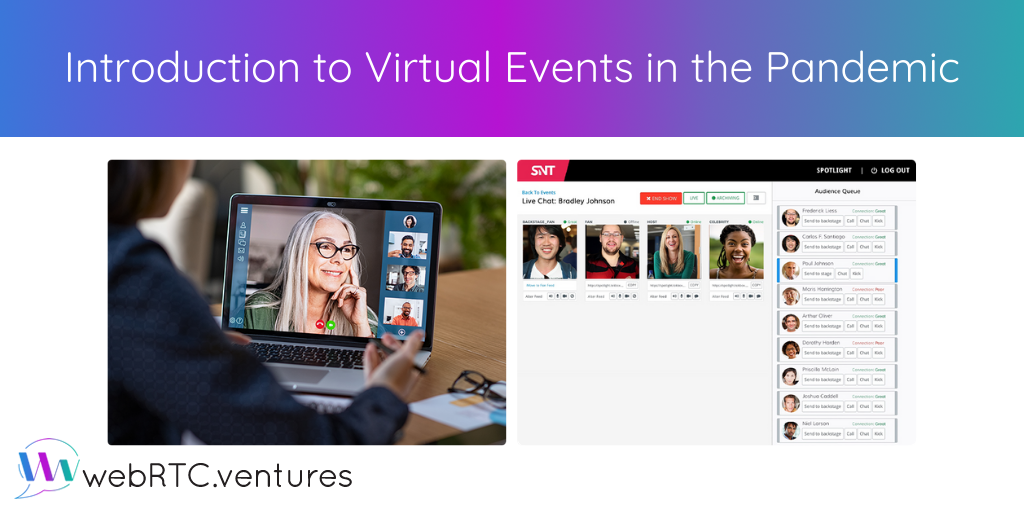As the coronavirus pandemic took hold and countries locked down, the first industry that looked at WebRTC video applications with fresh eyes was healthcare. This made sense; even during a pandemic, people get sick and medical care must go on in some form.
As the shock of COVID-19 and its associated lockdowns became “the new normal,” we saw a change in the type of industry looking to us for live video applications: online events.
The need for virtual events
My sons have made reference multiple times to “back when we thought we’d be out of school for a couple weeks and that was it.” Once it was apparent that the lockdowns would last a long time, companies and entire industries had to consider how they could reshape their business models to accommodate doing more online and less in person.
Events are definitely one of the major areas considering this. Weddings and funerals are now held online, if at all. Business conferences have become a series of loosely connected webinars, joined live or watched on a YouTube playlist. And live music has felt like a thing of the past, but bands have been hosting “in home concerts” and connecting with their fans however they can.
Improving the online event landscape
We’ve had some interesting conversations in the past couple of months with companies looking at how to change live events. Many have said things like, “The pandemic will eventually end, but the event industry will never be the same.” These forward-thinking entrepreneurs know that even once it’s safe to return to in person conferences and events, more people will stay home and participate remotely than in the past out of personal health concerns or fears about being in large groups.
“The pandemic will eventually end, but the event industry will never be the same.”
It will simply be more socially acceptable to join remotely. More and more events will offer different ticket prices and options for people to attend virtually. The experience may never be as fulfilling as attending in person, but for many people it will be good enough.
This is one area where I’m excited about what good may come out of an otherwise horrible situation. For confidentiality, I won’t discuss the ideas presented by potential clients or what we’re working with clients on now. In this series, I’ll share my experiences with events by others and trends I’ve seen during and after the pandemic.
Virtual events with WebRTC.ventures
These experiences are not unique to me, but I probably look at them differently than others due to our place at WebRTC.ventures. Our team is actively participating in and building live event experiences in a variety of use cases. We can help you build solutions for interactive broadcasting, like the work we did with Tokbox and Vonage. We can also help you build live streaming applications combining WebRTC with HLS and other large broadcasting platforms, such as Millicast and Red5.
Virtual events and live streaming technologies can be used for a variety of use cases—from the deeply personal like weddings and funerals, to social gatherings like concerts, to the corporate applications connecting large remote teams and business conferences.
While I won’t be able to share proprietary details about the work we’re doing with our clients, I will look at experiences I’ve had and what others are doing publicly as examples of the types of change you can expect to see in virtual events in the coming months and years. I hope it inspires you with tools you can use right now, and if it inspires you to build a custom experience, contact us at WebRTC.ventures and we’ll be happy to discuss building it for you!
As we publish more posts in this series, we will link to them below:











